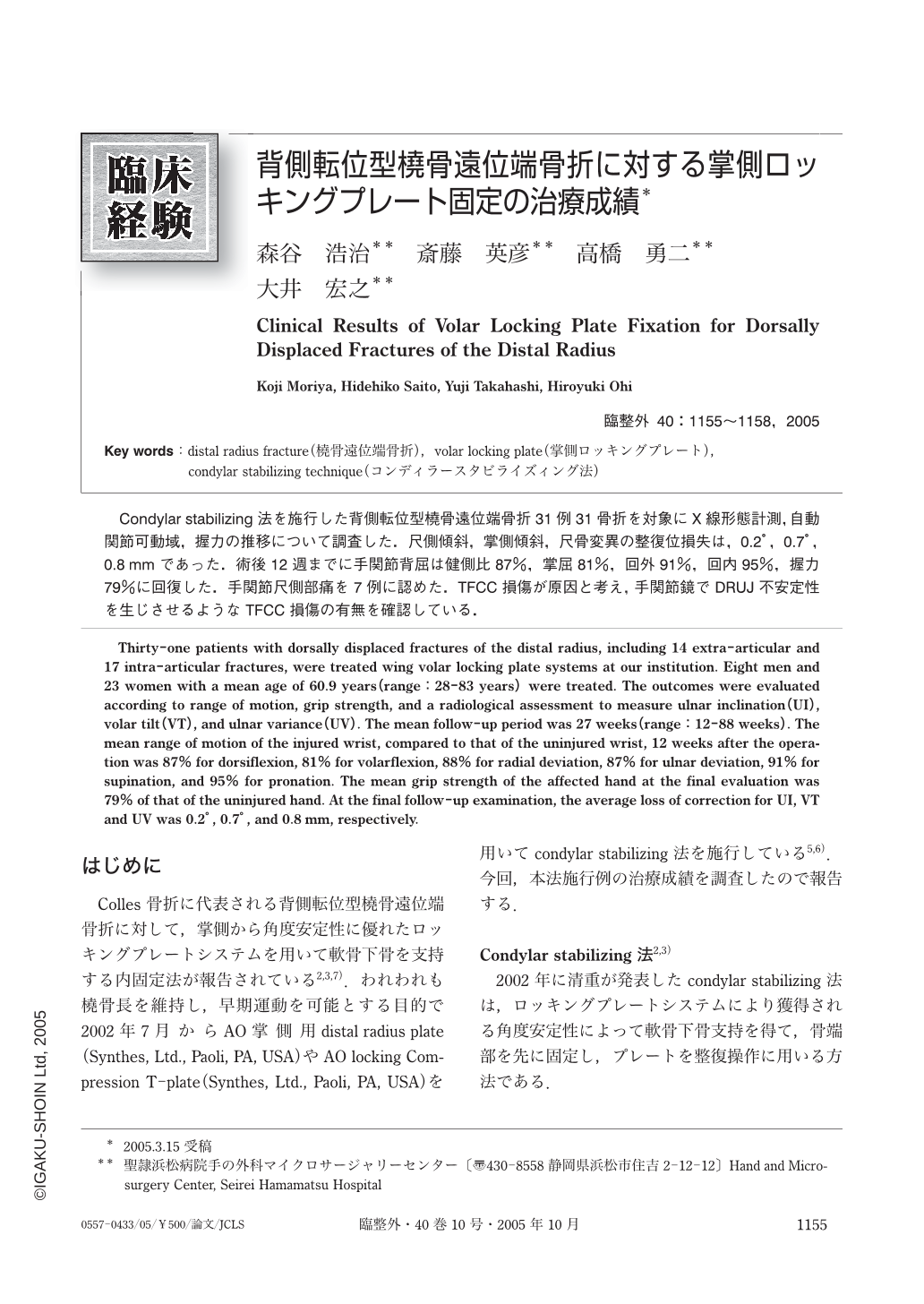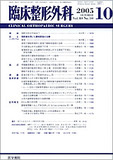Japanese
English
- 有料閲覧
- Abstract 文献概要
- 1ページ目 Look Inside
- サイト内被引用 Cited by
Condylar stabilizing法を施行した背側転位型橈骨遠位端骨折31例31骨折を対象にX線形態計測,自動関節可動域,握力の推移について調査した.尺側傾斜,掌側傾斜,尺骨変異の整復位損失は,0.2°,0.7°,0.8mmであった.術後12週までに手関節背屈は健側比87%,掌屈81%,回外91%,回内95%,握力79%に回復した.手関節尺側部痛を7例に認めた.TFCC損傷が原因と考え,手関節鏡でDRUJ不安定性を生じさせるようなTFCC損傷の有無を確認している.
Thirty-one patients with dorsally displaced fractures of the distal radius, including 14 extra-articular and 17 intra-articular fractures, were treated wing volar locking plate systems at our institution. Eight men and 23 women with a mean age of 60.9 years (range:28-83 years) were treated. The outcomes were evaluated according to range of motion, grip strength, and a radiological assessment to measure ulnar inclination (UI), volar tilt (VT), and ulnar variance (UV). The mean follow-up period was 27 weeks (range:12-88 weeks). The mean range of motion of the injured wrist, compared to that of the uninjured wrist, 12 weeks after the operation was 87% for dorsiflexion, 81% for volarflexion, 88% for radial deviation, 87% for ulnar deviation, 91% for supination, and 95% for pronation. The mean grip strength of the affected hand at the final evaluation was 79% of that of the uninjured hand. At the final follow-up examination, the average loss of correction for UI, VT and UV was 0.2°, 0.7°, and 0.8mm, respectively.

Copyright © 2005, Igaku-Shoin Ltd. All rights reserved.


